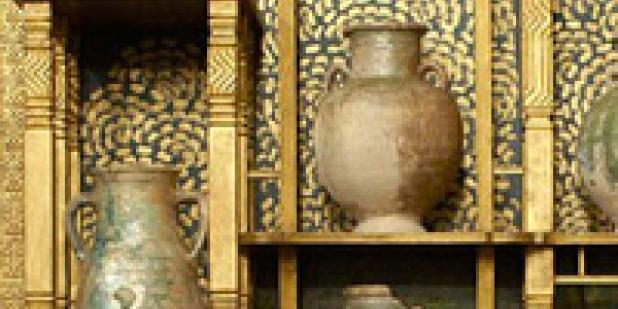Happy Lunar New Year from the USC US-China Institute!
The Peacock Room Comes to America
For the first time, the Smithsonian Institute's Freer Gallery's renowned Peacock Room has been restored to its appearance in 1908, when museum founder Charles Lang Freer used it to organize and display more than 250 ceramics from all over Asia.
Where

For the first time, the Freer Gallery's renowned Peacock Room has been restored to its appearance in 1908, when museum founder Charles Lang Freer used it to organize and display more than 250 ceramics from all over Asia. The first special exhibition in the room since its conservation in 1993, The Peacock Room Comes to America highlights Freer's belief in "points of contact" between American and Asian art and underscores the relationship among the museum's diverse collections.
The Peacock Room was originally designed by architect Thomas Jeckyll for British shipping magnate Frederick Leyland, who wanted a place to showcase his blue-and-white Chinese porcelain collection in his London home. When American artist James McNeill Whistler—whose interest in blue-and-white is the subject of the related Freer exhibition Chinamania: Whistler and the Victorian Craze for Blue and White—redecorated the room in 1876 as a "harmony in blue and gold," he too was inspired by the delicate patterns and vivid colors of the pots. Their slick surfaces did not appeal to Freer, however, who favored complex surface texture and subtly toned glazes. When he purchased the Peacock Room and moved it from London to Detroit, he filled the shelves with pots he had collected from countries as diverse as Egypt, Iran, Japan, China, and Korea. Freer's ceramics are absorbing individually and as part of the full installation, which Freer thoughtfully designed to form a harmonized whole.
Featured Articles
We note the passing of many prominent individuals who played some role in U.S.-China affairs, whether in politics, economics or in helping people in one place understand the other.
Events
Ying Zhu looks at new developments for Chinese and global streaming services.
David Zweig examines China's talent recruitment efforts, particularly towards those scientists and engineers who left China for further study. U.S. universities, labs and companies have long brought in talent from China. Are such people still welcome?






